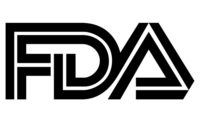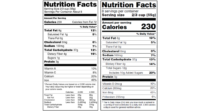Last week, the U.S. Food and Drug Administration (FDA) announced an update to its proposal to revise the well-known Nutrition Facts Panel (NFP) to include a percent Daily Value (%DV) for added sugars.
But along with that announcement came a consumer study on the effects of the proposed labels.
Over a year ago, IFIC Foundation also conducted similar research testing consumer comprehension of added sugars labeling.
And the results show that consumers are only more confused by “Added Sugars” labels.
When asked in the IFIC Foundation survey to identify the total amount of sugars in a product, 92 percent were able to do so correctly when viewing the current label format where “Sugars” are listed and “Added Sugars” are not.
But when viewing labels with added sugars information in FDA’s proposed format, significantly fewer people got it right — 55 percent were correct when viewing a label with “Sugars” and “Added Sugars” labeled.
Data from FDA’s study released this week confirms these findings.
The FDA’s results found that respondents were significantly more accurate in identifying the grams of sugars per serving using the current label compared to the proposed label — 81 percent compared to 65 percent.
They also found respondents were significantly more accurate in identifying the grams of sugars per container using the current label compared to the proposed label — 54 percent compared to 36 percent.
“A key question to answer in our consumer research is whether or not an “Added Sugars” declaration on the NFP provides clear information that is well understood by consumers that would be used appropriately in efforts to make informed dietary choices,” says co-author Kris Sollid, RD, IFIC Director of Nutrients Communications. “The short (and sweet) answer… providing added sugars information significantly decreases the ability for consumers to accurately identify the total amount of sugars in a product.”
While designing and commissioning independent research, the IFIC Foundation used FDA protocols to inform its survey, specifically, the nutrition profiles of labels and product types shown to consumers as templates to test consumer understanding of these labels.
In addition to using identical labels, some of the key questions were also identical to those found in the FDA questionnaire. For example, the central point to the added sugars labeling discussion is assessing how labeling “Added Sugars” might affect the ability to correctly identify the total amount of sugars in a product.
The International Food Information Council Foundation is dedicated to the mission of effectively communicating science-based information on health, food safety and nutrition for the public good.





